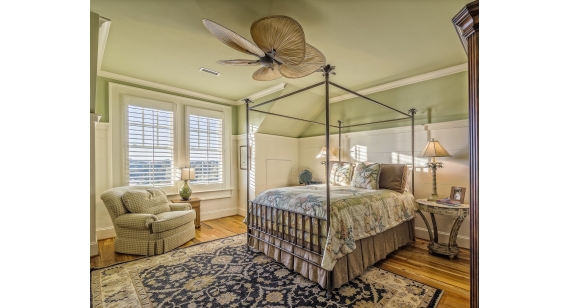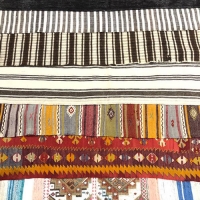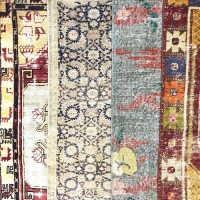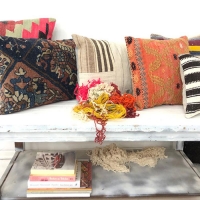
Motifs in Rug Weaving
In the traditional sense, many of the decoration elements were used in rug arts. These decoration elements were presented to the people with the method of weaving in the works of art which are not handled with aesthetic concern, but as a means of expression. In the center of the carpets produced in rug weaving, the rounded and oval patterns in the medallions and fabrics are similar to those of schemas. The meaning of the semse symbol in rugs and carpet weaving is the sun.
In the context of the weaving, the semse motif was mainly used in rugs and carpets and also in various materials. The semse motif was included not only in the 16th and 17th centuries but also throughout the history of traditional textiles, china, books, mines, tents. Today, although this motif has lost its initial meaning and importance in rugs or other materials, it has never been abandoned. It has been found out that this motif has been used as decoration in various objects in various cultures. It has been found that mythological, religious and artistic factors are at the forefront in the use of the Semse motif. The use of carpets and rugs was not only alone. It appears to be used with some symbols.
In the context of the weaving art, the carpet and rugs have an important value as symbolic. This motif, which is used not only in certain lands but also in many other geographies, has a different place in mythology and beliefs. Interactions between these cultures have been found to have important effects on the motif of the schema. Together with these cultural interactions, there are various stages in the meaning and form of the semse motif throughout the ages. These stages are also reflected in the rug area. Motif is classified in formal terms. In addition, the application of the semse motif in fabrics, carpets and rugs has been included in various researches.
The motifs of textiles produced by the public in handicrafts are generally geometric and the ones in the palace are usually vegetative. It is observed that the motifs and patterns within the body of the people do not change very much, and in the decorative objects produced for the palace, new motifs are used with the interaction of different cultures in some periods besides the traditional motifs. In the textile products in the palaces, it was found that the motifs in the round and oval forms were found in the octagonal, hexagonal, rhombus and sometimes quadrangular forms in the textiles outside the palace. As a result, this study shows that the motive motif came from a deep-rooted tradition of belief and culture, and has never changed its use despite the changes in meaning and form for centuries. In the 16th and 17th centuries, there were some details related to the application in fabrics, carpets and rugs.



